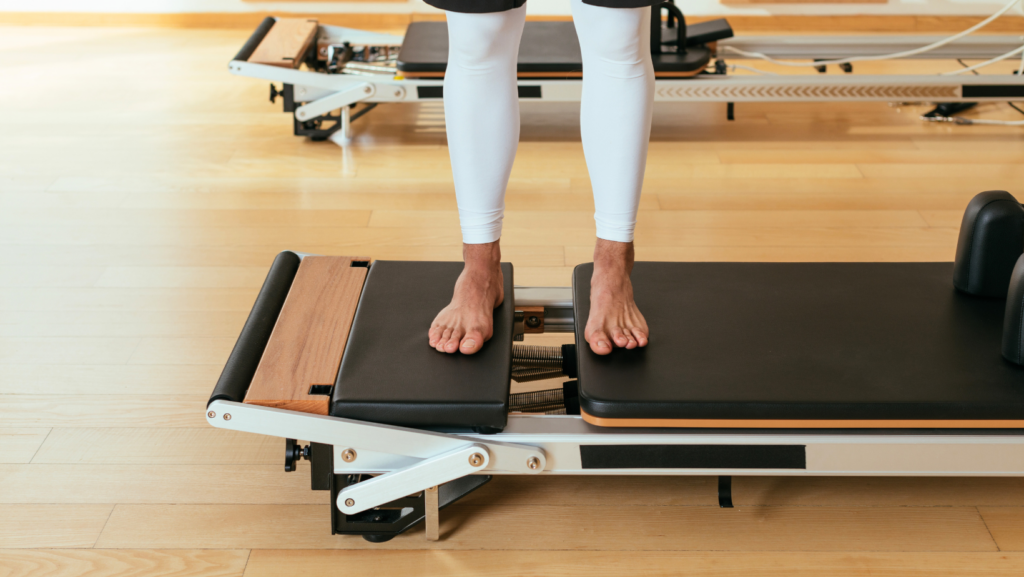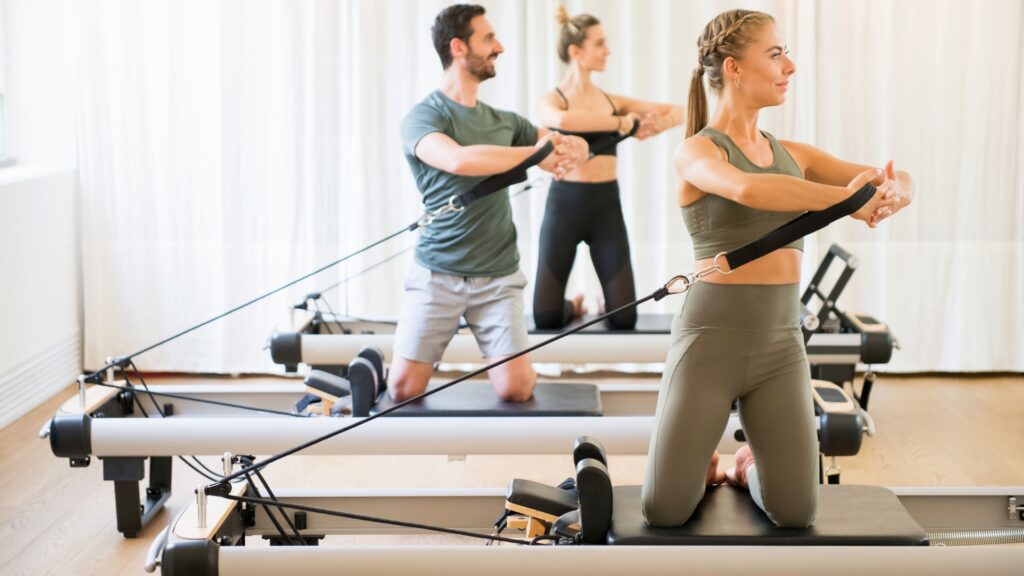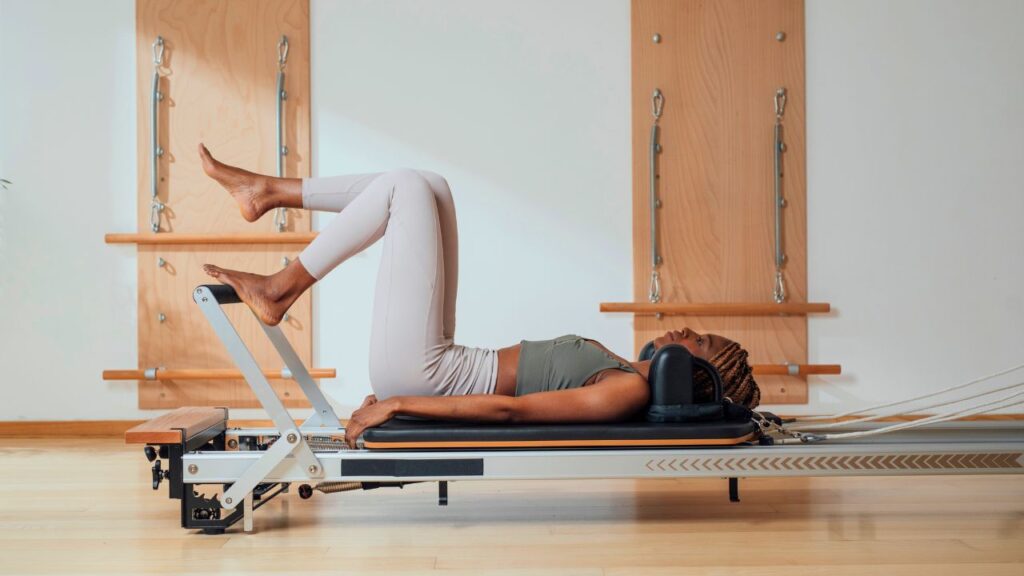5 Unexpected Benefits of Taking a Clinical Pilates Course
Hey! I'm Physio Ellen
Sharing the joys of Clinical Pilates with my clients is what keeps me fueled.
It would be my pleasure to show you the ins and outs so your own clients can benefit, too.
Grab my free Reformer Rehab Integration Guide
April 29, 2025
There are the obvious rehab benefits for incorporating Clinical Pilates into your practice—improving client outcomes, enhancing movement awareness, and broadening your skill set.
But there are also plenty of unexpected perks that go beyond the typical uses.
As health and fitness professionals, we know how important it is to focus on the well-being of our clients, but what about our own? Ideally, our jobs should be enjoyable, engaging, and fulfilling in order to stay sustainable long-term.
If we don’t take steps to make our work feel rewarding, it’s easy to fall into a routine that feels more draining than inspiring. This is where a Clinical Pilates course can make a world of difference—not only for the clients we serve but for ourselves as practitioners.
After practicing as a physiotherapist for 20 years and being a certified Pilates instructor for over 10, I’ve found that Reformer Pilates in particular has become a source of renewal and energy in my own career.
Here are just a few of the hidden fringe benefits I’ve discovered along the way.

1. Happier Feet
Being able to wear leggings or nice joggers is already a huge plus, but spending time barefoot while at work? That’s the real winner right there. My feet are so much happier being able to stretch out during the day.
I’m lucky that I can be barefoot all the time, and it’s made such a difference in my physical well-being. After years of wearing shoes all day, it’s liberating to feel the ground beneath my feet. It’s not just a small luxury—it actually improves my overall physical comfort.
I’ve learned that the more I allow my feet to move freely, the less tension I feel in my legs. With improved feedback from the floor I’ve noticed better posture and stronger arches. I’ve also saved a lot of money on work shoes!
But what if you need to wear shoes around your workspace? Even just being able to slip out of them when it’s time to demo some Pilates exercises is great.
Working barefoot feels like a subtle reminder to prioritize my own body’s needs, which is often an afterthought when I’m busy either with work or being a mom. Why wait until the end of the day to decompress your feet?
2. Built-in Movement Breaks
Reformer Pilates movements can be a bit intimidating l for first-time learners. Every time I need to teach a new exercise, it’s generally helpful to demonstrate first. It can also be necessary to coach the client to mirror me while I guide them through. Even with seasoned clients, I still need to demo more advanced exercises.
All this visual cueing translates into built-in movement breaks throughout the day. It’s a simple but powerful way to get my body engaged and avoid getting stiff or tired.
These breaks make a huge difference in keeping my energy levels up and preventing the physical burnout.
The beauty of Pilates is that you don’t need to do an entire session to feel the benefits. Even brief moments of movement—like a few reps of stretching or some core activation—can feel really great.
Plus, these breaks not only help my body but give me fresh perspective and reminders of what to cue for. This is especially true if it’s been a while since I’ve done an exercise. This translates into a higher-quality experience for both myself and my clients.

3. Supercharged Verbal Cueing Skills
From my neuro rehab days, I was already aware that verbal cues matter, but getting certified as a Pilates instructor was a whole other level.
Verbal cues are a huge part of Pilates, especially when trying to elicit correct movements. I’ll also mention that I trained at a Pilates studio influenced by the Franklin Method, which is also heavy on word choice.
Words like ‘spin’, ‘glide’, ‘open’, and ‘float’ were not part of my vocabulary before, but now I use them all of the time. The subtlety of these cues allows me to be more precise in how I communicate with clients. This leads to less confusion and better results.
Whether it’s a cue for alignment, breath, or muscle activation, each word serves as a tool for helping deeper connection. Pilates also emphasizes the link between mind and body, so using imagery can improve how clients perceive and perform exercises.
It’s amazing how a single word can shift someone’s experience on the Reformer and lead to better movement quality.
Additionally, these verbal skills have enhanced my treatment effectiveness with virtual clients. When the COVID pandemic hit, it was a great surprise to see how much I could accomplish without my hands.
With every client I teach, I get to experiment with my choice of words to see what resonates the best. I now have a vocabulary of useful cues to help improve outcomes.
4. Creativity Outlet
With so many variables in a Pilates physio session—whether it’s the apparatus, the client’s abilities, or the client’s goals—it’s easy to get creative. There are endless opportunities to adjust, tweak, or completely overhaul an exercise.
As a clinical Pilates instructor, you have the flexibility to modify routines in real-time, making it a highly adaptive and creative environment. I love that no two sessions are ever the same.
Whether it’s accommodating an injury or challenging more advanced client, the possibilities for creativity are endless.
Sometimes, I find myself making small tweaks to an exercise that completely transforms its impact, and that’s incredibly satisfying. It’s like solving a puzzle—figuring out how to best challenge the body while maintaining alignment and safety.
Pilates also encourages experimentation. You can play with different props or apparatuses, like the Reformer, Cadillac, or Chair, to keep sessions interesting and engaging. I also think clients appreciate some degree of novelty to keep them interested in the treatment process.
Whether I’m developing new exercises for a client or finding unique ways to explain an exercise to a beginner, I’m constantly learning and pushing my creative boundaries. And the best part? That creativity doesn’t just benefit my clients—it helps me scratch my creativity itch and keeps me invested in my practice.
5. Increased Critical Thinking Opportunities
Reformer Pilates specifically really tickles my brain like nothing else. The complexity of the exercises and the continuous process of observing my clients’ movements force me to think critically and on my feet.
Every session requires me to adapt, problem-solve, and refine techniques to suit the unique needs of each client. This continuous mental challenge keeps my brain sharp and engaged, and it’s exciting to constantly learn and grow in the process.
It’s not just about teaching exercises; it’s about applying critical thinking skills in a dynamic, real-time environment.

Could a Clinical Pilates course be for you?
As you can see, the benefits of taking a clinical Pilates course extend far beyond just enhancing your clients’ experience. From improving your own physical well-being to stimulating your brain and boosting creativity, the unexpected perks are awesome. It’s a great way to stay engaged, flexible, and innovative.
If you’re looking to elevate your practice and bring a fresh approach to your sessions, read more about my online clinical Pilates certification course. I’ve designed this course to offer a comprehensive, flexible learning experience that you can take at your own pace. You’ll gain the knowledge, skills, and confidence to integrate Pilates into your practice, all from the comfort of your own home or clinic space.
leave a comment